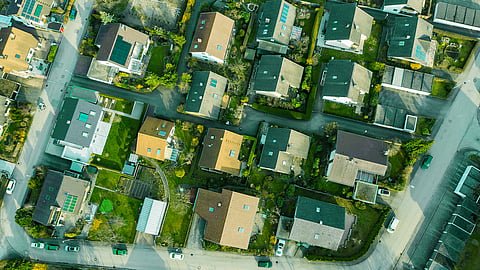Decarbonising SA’s building environment with Green building finance – COP27
Green Building Finance is critical to the successful decarbonisation of South Africa's building environment. Nedbank's green residential housing bond provides its clients – developers and investors in the affordable housing segment – with a compelling funding solution for green accredited homes in residential developments aimed at mainly low- to middle-income earners. Khayise Mashifane, Executive Head Property Finance Nedbank Corporate and Investment Banking, shares some details.
Excerpts from the interview with Khayise Mashifane
Green Residential Development Fund issued by Nedbank
It was the first of its kind. There were about a billion green residential bonds that were raised in the market. It stimulates the rollout of edge accredited type of development. The innovative blended-finance solution seeks to support developers in the adoption of edge building standards, as well as providing training, support and performance-based incentives to offset the cost of going green. For example, eligible projects and developers can get up to a maximum of 4% of the loan amount as an incentive to offset such costs.
Sustainability segment of the JSE
The relevance is the JSE sustainability segment makes it easier to list and trade sustainably related instruments and provide a platform for companies and other institutions to raise funds for activities that activate sustainable development. The segment broadens the investment opportunities or options available to investors and allows insurers to increase their participation in impact and sustainable investments.
Sustainability-focused solutions presented by Nedbank
I am going to concentrate on the green bond itself without singling out any specific projects. The eligible projects, which we have reviewed and will continue to review under the bond, should have the attributes. Firstly, that support both existing and new developers who want to participate in the construction of edge-certified green residential properties. On the best effort basis, we will be using the bond to fund the affordable housing segment of the market, which comprises units with a value of just below R1.4 million or a gross rental monthly premium of about R8,300. However, we do take into cognizance that the properties vary and not all projects will be concentrated on only affordable. So, a maximum of $4.2 million per property will also qualify under this eligible criteria. Some of the projects we will also look at and single out is retrofitting of existing buildings. That is when a building that currently exists needs to be retrofitted to be aligned with the green elements.
The benefits of green financing
The cost of living is increasing and will continue to do so. For example, high cost of utilities such as electricity, water and, in recent days, the rising interest rates are quite persistent. So, the benefit of green financing can accrue to three participants in the housing market cycle. The first one being the end user, which is your home buyer, or perhaps in the case of rental, it's your tenant. Green financing will help them to lower the cost of utility bills because of the design elements that go into the green building itself; in case of preferential interest rates on their home loans, should they decide to buy a green certified type of property. So, end users can qualify for lower interest rates on green certified properties. The other factor is preservation of value and creation of equity. In case of, let's say, the increased resale value of properties in future for green type of products, should be weighed much better than a non-certified type of residential property. The second participants will benefit from the greening perspective. It is your developers of property buildings.
How will they benefit? It is access to a pool of cheaper funding, the higher sales value of green types of residential units, and quicker to sell green types of units because of the benefits, which accrue to the end user. Those greening types of properties can also be a new source of revenue streams. For example, these days we have rooftop solar systems installed. The final part of the benefactor on the screen financing will be your financial institutions like Nedbank, which I work for. We can grow market share resulting in proper cross-sell opportunities. We can differentiate ourselves in terms of branding because of promoting green types of products, and we will have a better profile of clients as a result.
See also:

